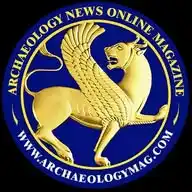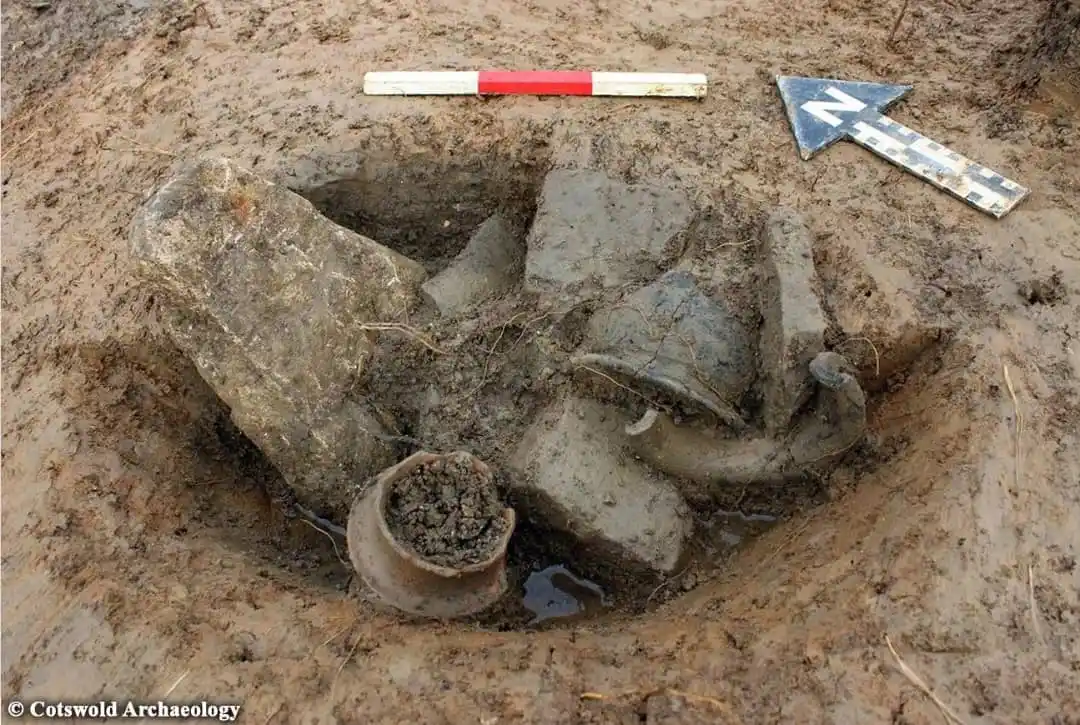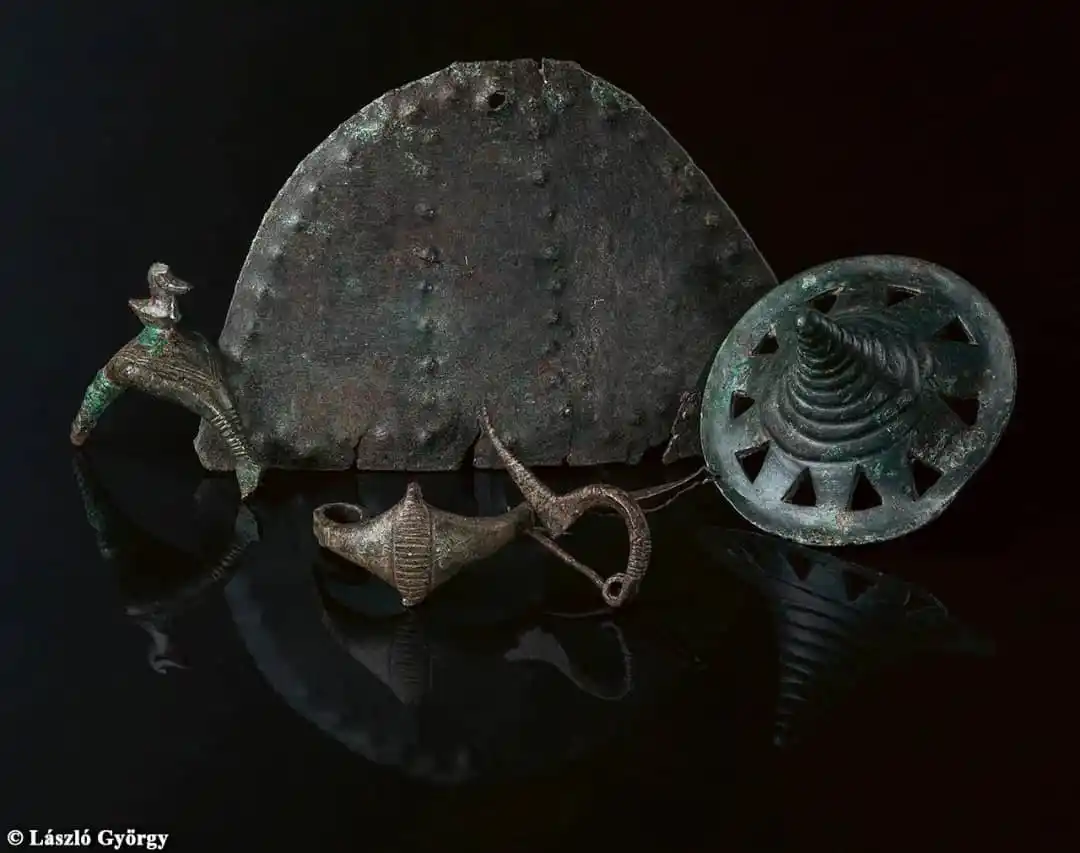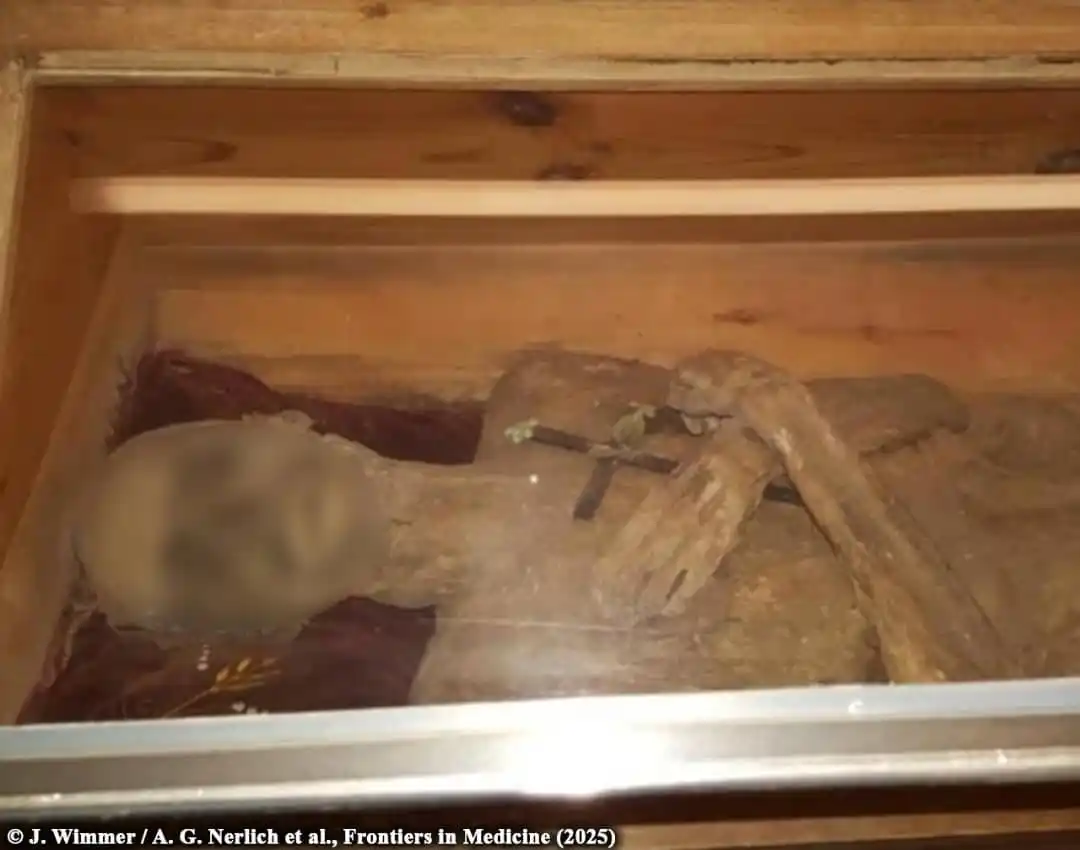
Archaeology News Online Magazine
41 subscribers
About Archaeology News Online Magazine
Archaeology News is an international online magazine that covers all aspects of archaeology. 📚⛏️📏🗿 Website: www.archaeologymag.com
Similar Channels
Swipe to see more
Posts

Oldest bone spear tip in Europe, made by Neanderthals, found in Russia Archaeologists working in the Caucasus Mountains in southern Russia discovered a revolutionary artifact that challenges assumptions held for centuries about Neanderthal technological skill. A bone spear point that measures 9 centimeters in length, recovered from Mezmaiskaya Cave in the North Caucasus region, is now confirmed to be the oldest of its kind discovered in Europe. Dating back 70,000 to 80,000 years, the artifact is a robust indicator that Neanderthals independently developed complex hunting tools long before modern humans... More information: https://archaeologymag.com/2025/05/oldest-bone-spear-tip-in-europe-neanderthals-russia/


Pompeii discoveries reveal family’s tragic final moments in the House of Helle and Phrixus Archaeologists have unearthed the grim final moments of a Pompeii family in the House of Helle and Phrixus, offering a poignant glimpse into life and death during the devastating eruption of Mount Vesuvius in 79 CE. The discoveries, published in the E-Journal of the Pompeii Excavations, reveal a desperate attempt at survival as volcanic forces engulfed the city... More information: https://archaeologymag.com/2025/05/pompeii-discoveries-familys-tragic-final-moments/


Roman road, infant burials, and rare artifacts unearthed in ancient Augusta Raurica, Switzerland In a major archaeological excavation prior to a new construction project in Kaiseraugst, Switzerland, archaeologists uncovered well-preserved Roman structures and rare artifacts in the ancient area formerly known as Augusta Raurica. The rescue excavation, led by the Aargau Cantonal Archaeology Department, was carried out from May 2024 to March 2025 and shed new light on the lower town of one of the most significant Roman settlements north of the Alps... More information: https://archaeologymag.com/2025/05/roman-road-burials-artifacts-in-augusta-raurica/


Hidden messages praising Pharaoh Ramesses II discovered on 3,300-year-old Egyptian obelisk in Paris A 3,300-year-old Egyptian obelisk looming over Paris’ Place de la Concorde recently yielded a sequence of secret messages, all thanks to French Egyptologist Jean-Guillaume Olette-Pelletier’s keen observations. Once placed at the Luxor Temple’s entrance in Egypt, the red granite monument is now the target of a groundbreaking study that claims it was an ancient propaganda monument promoting Pharaoh Ramesses II as a divine ruler. Originally constructed by Ramesses II—one of the most prolific builders of ancient Egypt—the obelisk was gifted to France by the Ottoman Empire in the early 19th century and relocated in 1836... More information: https://archaeologymag.com/2025/05/hidden-messages-on-egyptian-obelisk-in-paris/


Roman limekiln and settlement discovered in Barnwood reveal life and industry in ancient Gloucester Archaeologists from Cotswold Archaeology revealed significant Roman artifacts at the Centre Severn development site in Barnwood, Gloucester, giving new insights into life and construction practices under Roman occupation in Britain. Excavations between September 2020 and February 2021 revealed the remains of a massive Roman settlement dating from the 2nd to 4th centuries CE, and a remarkably preserved limekiln—perhaps the first of its kind to be excavated in Gloucestershire... More information: https://archaeologymag.com/2025/05/roman-limekiln-and-settlement-discovered-in-barnwood/


3,400-year-old hoards found on Hungary’s Somló Hill reveal ancient secrets Archaeologists excavating Somló Hill in western Hungary have unearthed six extraordinary hoards of metal artifacts over 3,000 years old, offering new information on the social and ritual life of Bronze and Iron Age communities in the area. The finds, which were made between 2023 and 2025, were detailed in a recent paper published in the journal Antiquity... More information: https://archaeologymag.com/2025/05/3400-year-old-hoards-found-on-hungarys-somlo-hill/


Hidden optical secrets of the Parthenon revealed by Oxford archaeologist In a remarkable breakthrough blending archaeology and advanced 3D technology, Oxford University archaeologist Professor Juan de Lara has shown how the ancient Greeks used advanced lighting techniques to transform the inside of the Parthenon into a stage of divine spectacle. De Lara’s study finally answers an ancient mystery about how light was used in the world-famous temple dedicated to Athena on the Acropolis of Athens. Instead of the traditional vision of Greek temples as bright, marble spaces, de Lara’s research shows that the Parthenon was kept dim. This dark atmosphere created a theatrical setting for a dramatic lighting effect that seemed to illuminate the enormous chryselephantine statue of Athena by Phidias, made in 438 BCE... More information: https://archaeologymag.com/2025/05/hidden-optical-secrets-of-the-parthenon-revealed/


Ancient secrets of Maya blue revealed: a second method for creating the iconic pigment discovered An amazing new find is expanding our understanding of Maya Blue—one of the most enigmatic and enduring pigments of the ancient world. Dean E. Arnold, adjunct curator of anthropology at the Field Museum of Natural History in Chicago and professor emeritus at Wheaton College, has found a second ancient method of producing the pigment, gaining new insights into Maya technology, spirituality, and artistry. More information: https://archaeologymag.com/2025/05/ancient-secrets-of-maya-blue-revealed/

Well-preserved 18th-century Austrian mummy identified as parish vicar embalmed using previously unknown method An extremely well-preserved mummy found in the crypt of a village church in Austria not only has its identity confirmed but also provides a new, previously unknown method of embalming. The body, which had long been referred to as the “Air-Dried Chaplain” of St. Thomas am Blasenstein, is now identified as the body of Franz Xaver Sidler von Rosenegg, a parish vicar who died in 1746... More information: https://archaeologymag.com/2025/05/well-preserved-18th-century-austrian-mummy/


Ancient DNA confirms Picuris Pueblo’s ancestral link to Chaco Canyon In a milestone study published in Nature on April 30, northern New Mexico’s Picuris Pueblo has, for the first time, led a genetic study confirming their ancestral connection to the famous Chaco Canyon — a monumental site central to Pueblo culture. This collaboration with international geneticists represents a significant shift in the methods of scientific research involving Indigenous communities, placing Native voices at the forefront... More information: https://archaeologymag.com/2025/05/dna-confirms-picuris-pueblos-link-to-chaco-canyon/















